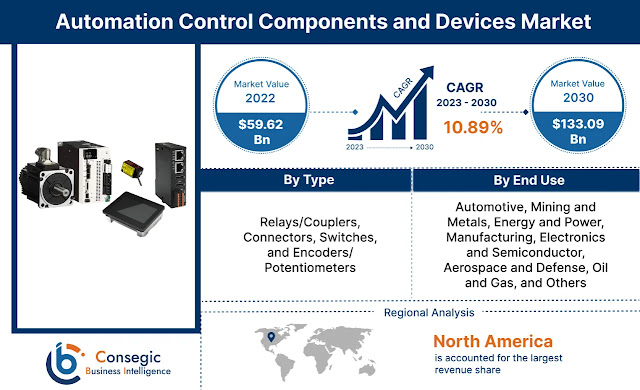Navigating the Depths: Strategic Insights into the Hydrographic Equipment Market
The global Hydrographic Equipment Market is poised for significant growth, with its valuation projected to rise from USD 3.46 billion in 2024 to approximately USD 3.59 billion in 2025. By 2032, the market is estimated to surpass USD 5.34 billion, expanding at a compound annual growth rate (CAGR) of 6.0% from 2025 to 2032. This growth is not just a numerical projection—it reflects increasing global demand for marine data, intensified maritime activity, and strategic investments in ocean exploration, defense, and offshore infrastructure.
1. Opening Insight (Hook)
As nations and industries race to understand and harness the potential of our oceans, the Hydrographic Equipment Market is emerging as a silent enabler of this blue revolution. Whether it’s safeguarding undersea infrastructure, supporting offshore wind farms, or mapping uncharted marine territories, the demand for precise and reliable hydrographic tools is accelerating across the globe.
Global geopolitical interests in maritime borders, coupled with the commercial push toward offshore energy and subsea cabling, have transformed hydrography from a niche segment to a critical strategic domain. And at the heart of this transformation is innovation in hydrographic equipment.
2. Market Evolution & Significance
Historically, hydrography was limited to naval operations and academic research. But the landscape has dramatically evolved. Today, hydrographic data underpins a wide spectrum of high-stakes applications—from securing underwater pipelines to guiding autonomous vessels through congested ports.
This evolution has been fueled by:
-
Technological advancements such as LiDAR, sonar imaging, and AI-enhanced mapping
-
Shifts in global trade, prompting deeper seaport development and smarter navigation systems
-
Regulatory imperatives from environmental agencies and defense authorities for accurate seabed mapping
Moreover, the push for sustainable marine economies—or "blue economies"—has brought hydrography into mainstream conversations around infrastructure, environment, and national security.
3. Market Segmentation
To better understand where growth and investment are occurring, the Hydrographic Equipment Market is segmented as follows:
By Type
-
Positioning Systems
-
Optical Systems
-
Sensing Systems
-
Profilers
-
Software
-
Others
By Platform
-
Surface Vessels
-
USVs (Unmanned Surface Vehicles) and UUVs (Unmanned Underwater Vehicles)
-
Aircraft
By Application
-
Hydrographic and Bathymetry Survey
-
Port and Harbor Management
-
Offshore Oil and Gas Survey
-
Cable and Pipeline Route Survey
-
Others
By Depth
-
Shallow Water
-
Deep Water
By End User
-
Commercial
-
Research
-
Defense
This segmentation showcases the market’s growing complexity and cross-functional utility. For example, USVs and UUVs are revolutionizing data collection in hazardous or deep-sea environments, while profilers and sensing systems are critical in maintaining data accuracy in real-time operations.
4. Key Industry Players
Key Players: Atlas Electronik GmbH (Germany), Hexagon AB (Sweden), Kongsberg Gruppen ASA (Norway), Faro Technologies Inc. (US), Nikon-Trimble Co., Ltd (Japan), Raytheon Company (US), Seco (Sweden), Teledyne Technologies Inc. (US), Thales Group (France), Topcon Corporation (Japan), Trimble Navigation Limited (US)
5. Recent Developments & Future Outlook
The Hydrographic Equipment Market is being reshaped by a wave of innovation and strategic moves:
-
Autonomous surveying solutions are entering the mainstream, offering cost-effective alternatives to manned missions. These are especially effective in disaster response and environmental monitoring.
-
Cloud-based hydrographic software is enabling real-time collaboration and data sharing among marine stakeholders.
-
Defense applications are intensifying due to rising concerns around maritime security, underwater mine detection, and naval surveillance.
In addition, governments and private players are investing heavily in subsea infrastructure—whether for wind energy, internet cabling, or subsea mining exploration. These investments drive up demand for robust, high-precision hydrographic equipment.
Looking ahead, we can expect a transition from hardware-dominated solutions to integrated ecosystems—where software, sensors, AI, and autonomous platforms converge to deliver dynamic hydrospatial intelligence.
6. Regional Analysis of Hydrographic Equipment Market Market
North America
A dominant force, driven by strong defense spending, offshore energy exploration, and cutting-edge tech adoption. The U.S. Navy and energy companies continue to invest in next-gen hydrographic systems.
Europe
Home to several market leaders, Europe is known for its research-focused and regulation-compliant approach. The region is also investing in renewable offshore energy, including tidal and wind farms, which necessitates advanced seabed mapping.
Asia Pacific
The fastest-growing region, fueled by massive port development, territorial disputes, and growing offshore energy projects. Countries like China, India, and Japan are investing in hydrographic infrastructure to support both civilian and military initiatives.
Middle East & Africa / Latin America
Emerging growth zones due to offshore oil and gas activities, especially in the Persian Gulf and Brazilian coasts. These regions offer high potential for exploration-focused hydrographic solutions.
Conclusion
As the world dives deeper—literally and figuratively—into understanding and harnessing the oceans, the Hydrographic Equipment Market has moved from the periphery to the core of maritime strategy. From securing critical subsea infrastructure to enabling autonomous marine operations, this market is no longer optional—it’s essential.
For investors, policymakers, and technology providers, the message is clear: the ocean floor is the next frontier of innovation and influence, and hydrographic equipment is the map to get there.




Comments
Post a Comment